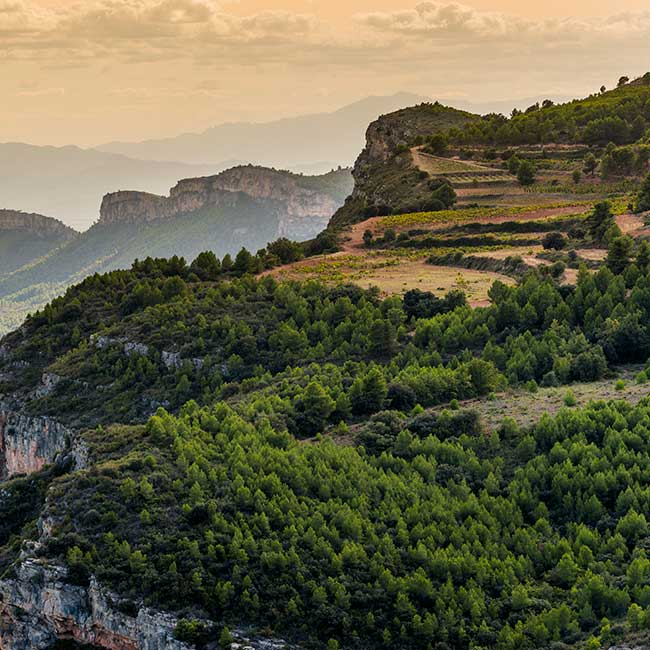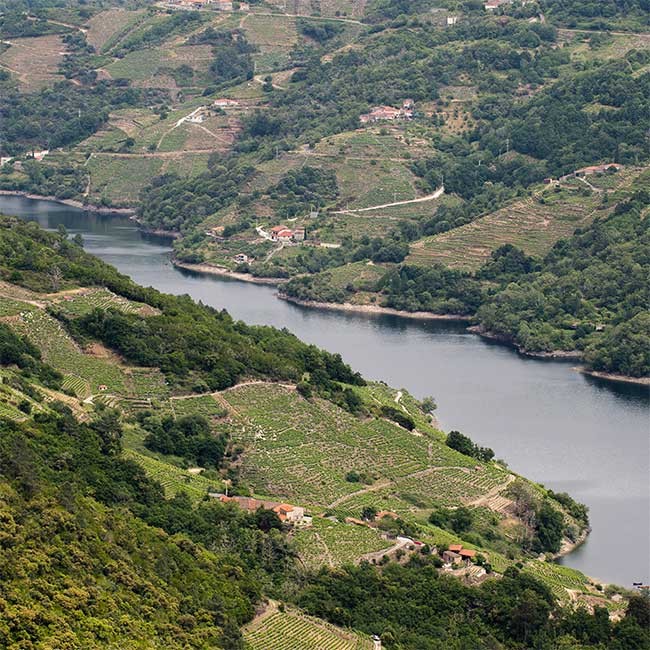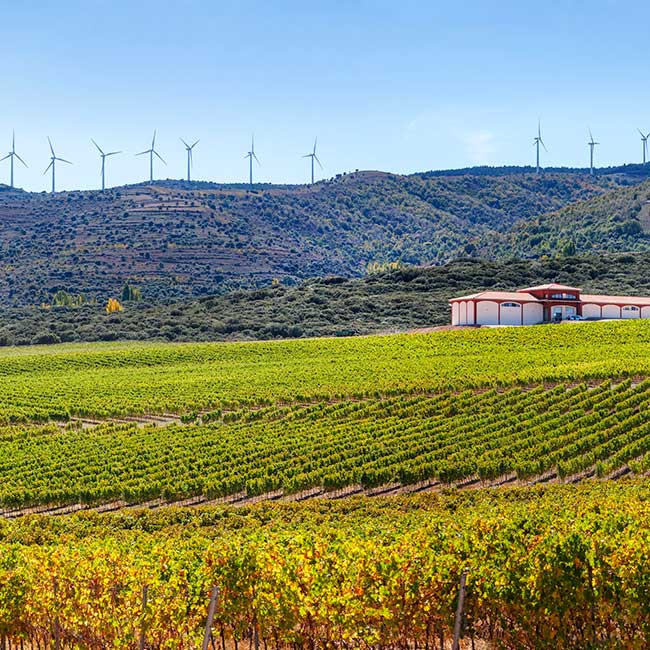.png.transform/rendition-xs/image_image%20(1).png)
Vast Skies and High Altitude: Vineyards in the Meseta and Northern Spain
As we explored in a previous article Spain is home to the highest altitude vines in Europe. Altitude is a key factor in terms of concentrating color, tannin and aroma in wines, as well as preserving acidity. But Spain’s high altitude terroirs vary greatly from windswept plains to steep, rocky terraces. Let’s explore.

What springs to mind when you think of high altitude vines? If your answer is vertiginous slopes and mountain peaks, then the country has several regions classified as High Mountain Viticultural areas that would fit this stereotype. But what of the meseta, the seemly flat plateau that covers most of central Spain? At an average of 600m (1968ft) above sea level, it also classifies as high altitude within the European context.
High mountain viticulture in Spain

Aside from the Canary Islands, home to Europe’s highest vines and an area we explored in a previous article several regions in Spain classify under the Centre for the Research, Study, Protection, Co-ordination and Advancement of Mountain Viticulture (CERVIM)’s designation of high mountain or heroic viticulture. These are DO Ribeira Sacra, DOCa Priorat and the lesser-known DO Cangas in Asturias. This means that they have areas located at more than 500m (1640ft) above sea level, slopes over 30% and vineyards grown in small, terraced parcels that can only be worked by hand. In Ribeira Sacra, winery Ronsel do Sil grows local grapes Godello, Mencia and Merenzao on the vertiginous slopes of the River Sil, as high as 750m (2460ft).
Winery Scala Dei has some of the highest vines on Priorat’s steep slate terraces, up to 800m (2624ft), where it grows Garnacha with smaller amounts of Cariñena and Syrah. Ricard Rofes, director and winemaker at Scala Dei comments: “Nowadays it is a privilege to have vines planted at height, this altitude transports us to the north, it refines the wines and reduces their alcohol content by delaying ripening, reducing the ever more present effects of climate change.”
High altitude vineyards in the DO Ribera del Duero

With its rolling expanses and vast skies it is easy to forget that you are an average 800m (2624ft) above sea level in Ribera del Duero. This increase in altitude, and huge diurnal temperature range during the growing season, is the main factor behind the firmer tannins and deeper color of the Tempranillo grown here.
Dominio de Atauta controls some 45ha (110 acres) of pre-phylloxeric vines at 930-1000m (3050- 3280ft) to the east of the DO. Winemaker Jaime Suárez explains, “Altitude slows down the growth cycle, making us the last to bud and the last to harvest. Another effect is the increase in the thermal range, particularly at the end of the cycle. From late August to October, daytime temperatures of 27-30ºC (80-86ºF) are interspersed with temperatures of 4- 6ºC (39-43ºF) at night. This rise and fall makes the ripening process even longer and slower, during the day the plant warms up and the ripening process starts, but at night the very low temperatures stall it. This means that acid levels are still high when picked, which translates into fresher wines. “
More recent projects include Bosque de Matasnos - a forest clearing of organic vines of up to 60 years of age at 950m (3116ft) – and the forthcoming Alma Carrovejas Milsetentayseis project located at 1076m (3530ft) in Peñaranda.
Rioja in white

As the DOCa Rioja aims to increase its production of white wines, the search has been on to find the best plots to cultivate varieties including Viura and Tempranillo Blanco. That’s not to suggest that vines were not already cultivated at high altitude. On the slopes of the Sierra de Toloño Mountains, vines are thought to have grown on the stunning Remelluri estate at 700-800m (2296-2624ft) since the 10th century.
Nivarius was the first Rioja winery to focus solely on white wines – Tempranillo Blanco and Maturana Blanca planted at 800m (2624ft). Finca La Nevera shows this altitude with an almost icy freshness, white fruit, lime and mineral notes. More recently, Barón de Ley established the highest vineyard in Rioja, the 500ha Finca Carboneras estate with a maximum altitude of 875m (2870ft), which may soon be extended to 900m (2952ft). Focused on the production of high quality white wines, it is planted with the newly approved white Rioja grapes.
High altitude vineyards in the DO Bierzo
When Álvaro Palacios arrived in Bierzo in the 1990s he caused a stir by actively looking for higher altitude plots, rather than in the more fertile and easier to farm valleys. The strength of his conviction can be seen in the ethereal Villa de Corullón Mencía, from plots at 600-1000m (1968-3280ft), aromatic with a featherweight but intense palate. Other wineries, such as Prada a Tope, followed his lead by planting at Mencia at 800m(2624ft) in the 2000s and Luna Beberide also has vines as high as 900m (2952ft).
Off the beaten track
Of course, that is not where it ends. Peninsula wines make Domino de Fontana and Quinta de Quercus Tempranillo in DO Uclés at 700-900m (2296-2952ft) above sea level, and Mustiguillo, which gained Pago status for its El Terrerazo estate at 800m, is now making waves with Finca Calvestra, a characterful 100% Merseguera from vines at 900m (2952ft). DO Arlanza has many parcels at 1000m (3280ft). I could go on. What a good excuse for a trip or tasting!
Text: Anna Harris-Noble

